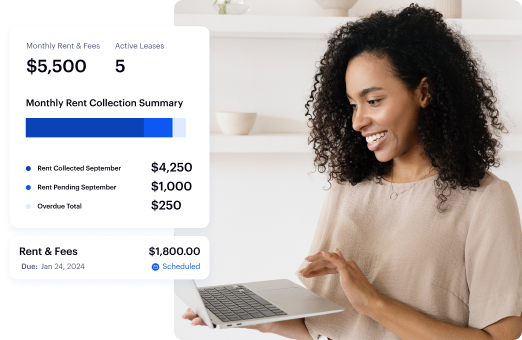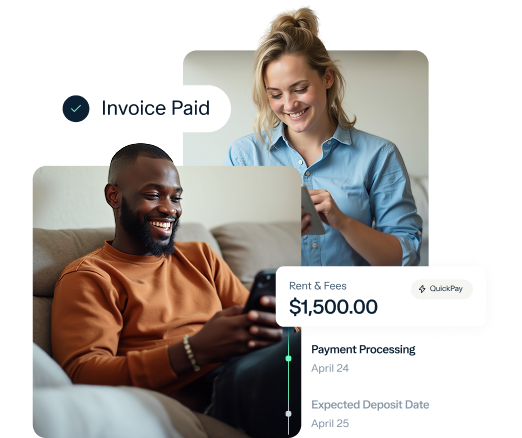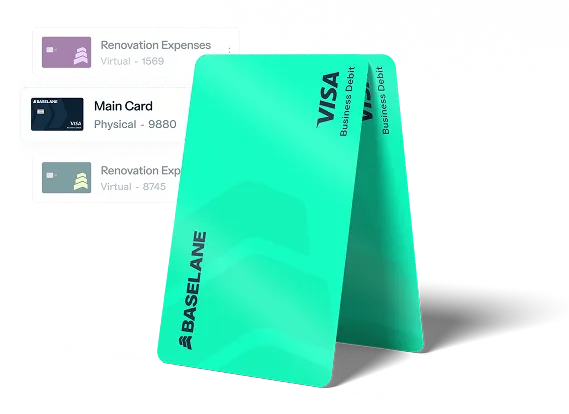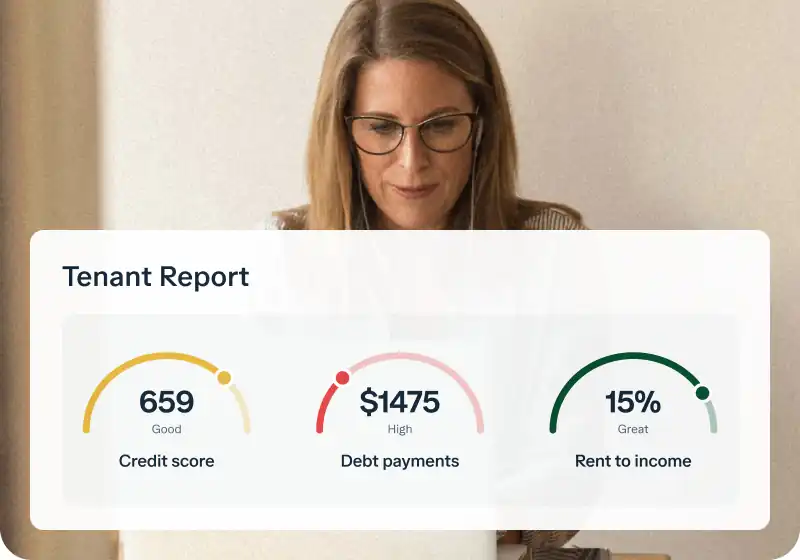As a real estate investor, you know that capital is king, and unlocking the equity in your existing properties is one of the smartest ways to fund your next big move.
A home equity loan on a rental property is an excellent financing tool, but it's different from borrowing against your primary residence. In this guide, we'll walk you through eligibility requirements to acquire equity loans and how to apply for them.
Key takeaways
- You can use a home equity loan on a rental property, but the terms will be stricter than on a primary residence, with higher interest rates and lower loan-to-value (LTV) ratios.
- A home equity loan gives you a lump sum with a fixed interest rate, while a HELOC (Home Equity Line of Credit) offers a revolving line of credit with a variable interest rate.
- Eligibility usually requires an LTV ratio of 65% to 75% on an investment property, a strong credit score (typically $680+$), and demonstrated cash flow to cover the new debt.
- Strategic uses include funding large renovations, covering emergency repairs, or securing a down payment for your next rental property purchase.
- The interest you pay on a home equity loan for a rental property is generally tax-deductible against your rental income, as long as the funds are used for business purposes.
What are home equity loans?
If you've been managing your rental business for a while, you've likely built up significant equity—the difference between the property's market value and your outstanding mortgage balance. A home equity loan is a way to cash in on that asset without selling the property.
When you take out a home equity loan, the lender gives you a lump sum of cash upfront, and you repay it over a fixed term, usually with a fixed interest rate. This structure provides predictability, making it ideal for a large, known expense, such as a major renovation.
Equity in an investment property vs. primary residence
When applying for financing, you'll find that lenders view the equity in an investment property differently from that in a primary residence. This is mainly because a rental property carries a higher perceived risk.
- Riskier investment: If financial trouble hits, a borrower is more likely to prioritize payments on their primary residence than on a rental property. Because of this added risk, lenders charge higher interest rates and apply stricter criteria for investment properties.
- Lower LTV limits: You can typically borrow less equity on a rental property. While a primary residence might qualify for an LTV ratio of up to 80% to 90%, investment properties are often capped at 65% to 75% LTV.
Eligibility requirements for a home equity loan
Securing a loan on an investment property is a meticulous process. Lenders will thoroughly vet your property's financial performance and your personal credit history to ensure you can handle the new debt.
Equity requirements and LTV ratios
The first hurdle is having enough equity. Lenders determine this using the Loan-to-Value (LTV) ratio, which compares the loan amount to the property's appraised value. For investment properties, you'll typically need to maintain a lower LTV than you would for your own home. You should plan on needing at least 25% to 35% equity in the property to qualify for a home equity loan or HELOC.
Credit score requirements
Your personal credit score is a direct indicator of your financial responsibility and is a major factor in determining your interest rate. For investment property loans, lenders often require a FICO score of $680$ or higher, and an even better score will get you more favourable terms.
Debt-to-income (DTI) ratio limits
Your debt-to-income (DTI) ratio compares your total monthly debt payments to your gross monthly income. Lenders use it to see if you can comfortably afford the new loan payment. The maximum DTI is typically capped, often around $43\%$ or lower, and this calculation must factor in the property's actual cash flow.
Reserve requirements
Lenders want assurance that you won't default if a unit goes vacant or a major repair is needed. This is where reserve requirements come in. You'll likely need to show sufficient cash reserves—typically six months of principal, interest, taxes, and insurance (PITI)—to cover the new loan payments on the property if rental income temporarily stops.
Property performance and cash flow
A key difference for investment property loans is the focus on the rental's performance. The lender will require proof that the property is generating enough rental income to cover all its operating expenses, including the new debt. They may specifically look at the Debt Service Coverage Ratio (DSCR), which should be $1.20$ or higher to demonstrate positive cash flow.
Home equity loan vs. HELOC for investment properties
When accessing equity, you typically have two main options: a traditional home equity loan or a HELOC. Both use your property as collateral but function differently.
A home equity loan provides a lump sum of cash upfront. You receive the full loan amount at closing and begin repaying it immediately in fixed monthly instalments over a set term. This offers predictability in your monthly payments and interest costs.
A HELOC, on the other hand, is a revolving line of credit. You can draw funds as needed up to a certain limit during a draw period, similar to a credit card. Payments during the draw period might be interest-only, followed by a repayment period with principal and interest payments.
For rental properties, a HELOC offers flexibility if you need funds intermittently for ongoing repairs or potential future property acquisitions. A home equity loan might be better if you have a large, one-time expense planned, like a major renovation. Consider your intended use of the funds when choosing between the two.
Financial considerations: rates, costs, and tax implications
Before jumping into a home equity loan, you'll need to understand the true financial cost, which extends beyond the interest rate.
Higher interest rates
A home equity loan on a non-owner-occupied property is viewed as riskier by lenders, so the interest rates are invariably higher than those for a primary residence. Investment property home equity loan rates are often 0.5 to 1% point or more higher than rates for primary residences.
For context, as of May 2025, general home equity loan rates averaged around 7.9% for a 5-year term. Investment property rates could range from the high 8% to the low 10% range or potentially higher, depending on the market and your qualifications.
The best way to reduce your rate is to ensure a low LTV, a high credit score, and a strong history of timely rental income collection.
Closing costs and fees
Just like a standard mortgage, home equity loans come with closing costs. These can include origination fees, appraisal fees, title insurance, and attorney fees. Factor these additional expenses into your calculations when evaluating the total cost of the loan.
Tax deductions
Here's some good news that can help offset the costs of using this financing tool: the interest you pay on a debt used for a rental property is generally tax-deductible.
The interest paid on debt used to acquire, construct, or substantially improve a rental property is typically tax-deductible against your rental income. Generally, as long as the funds from the loan are traceable to a business or rental activity, the interest is deductible as an operating expense on Schedule E.
Tax laws are complex and frequently change, so we always recommend you consult with a qualified tax advisor or Certified Public Accountant (CPA) to ensure you maximize your deductions and remain compliant.
Baselane saves time for you and your accountant by providing automated tax reports with all your income and expenses categorized and ready for tax time.
How to apply for a home equity loan
The application process for securing a property loan is quite lengthy, but if you have a good track record of your finances, it becomes manageable.
Step 1: Find lenders
While many traditional banks offer home equity loans, you might find more favourable terms with specialized real estate investment banks or credit unions, which are more accustomed to investment property risk. Make sure the bank provides financing options specific to real estate investors.
Step 2: Prepare your documents
To streamline the process, prepare the following documents upfront:
- Proof of ownership: Property deed or title report.
- Income statements: Profit and Loss (P&L) statement for the rental property (typically the last two years) to prove reliable cash flow.
- Personal tax returns: Typically, the last two years of your personal tax returns, including Schedule E (Supplemental Income and Loss) for the rental activity.
- Lease agreements: Current, signed leases to verify rental income amounts.
- Bank statements: Last three to six months of personal and rental property bank statements to verify reserves.
This is where a dedicated banking platform can save you time and accelerate the application process. Baselane's integrated bookkeeping automatically generates Schedule E reports and consolidated transaction ledgers, giving you the accurate records your lender needs instantly.
Step 3: Pre-qualification and application
Start by seeking pre-qualification from multiple lenders to compare rates and terms. Once you choose a lender, submit the formal application with all your meticulously gathered financial documentation.
Step 4: Appraisal and underwriting
The lender will order an appraisal to establish the property's market value. The underwriting team will then verify all documents, review your credit, and confirm the property's cash flow can support the new debt.
Step 5: Closing
The closing process is similar to a traditional mortgage refinance. You'll sign the loan documents, and the funds will be disbursed as a lump sum (for a loan) or made available in a separate account (for a HELOC).
Smart use cases of home equity loans
Once you access equity from your rental property, you can use the funds. Strategic use can help you grow your real estate business.
Funding renovations or improvements
Perhaps the most common use is capital improvements. Use the funds for major upgrades, like a new kitchen or HVAC system, that can increase the property's value and justify higher rent, thus growing your passive income.
Using equity to buy another rental property
The BRRRR (Buy, Rehab, Rent, Refinance, Repeat) method is a cornerstone of growth for many landlords. Use your equity as a down payment for your next investment property, enabling you to scale your portfolio without draining your personal cash reserves.
Check out our guide on how to get a loan for a rental property to weigh and compare available loan options.
Other potential uses
Some other ways you can use your loan include the following.
- Emergency reserves: Creating an emergency fund to handle unexpected, large repairs (like a broken roof) without disrupting your personal finances.
- Paying off high-interest debt: Consolidating other high-interest debt related to the rental business.
Risks of using a home equity loan on a rental property
While a powerful tool, leveraging your equity isn't without risk.
- Risk of foreclosure: The home equity loan is secured by the property. If you can't make the payments, the lender can foreclose, meaning you could lose the investment property.
- Market value decline risk: If property values drop, you could end up owing more on the property than it's worth, known as being "underwater" on the loan.
- Managing multiple loan payments: Adding a second mortgage layer to a property increases the monthly payment burden. It’s crucial to know the property can reliably cover all expenses.
- Uncertainty of investment returns covering debt: If you use the funds for an improvement, there's no guarantee the renovation will result in a rent increase sufficient to cover the new debt.
Alternative rental property loan options to home equity
A home equity loan or HELOC isn't the only way to access capital from your rental properties. There are several types of rental property loans that may be better suited for you, depending on the use cases you’re looking for.
- Cash-out refinance: This involves replacing your existing mortgage with a new, larger one. The difference between the new loan and your current balance (minus closing costs) is paid to you in cash. It gives you a new, single loan but might come with a different, possibly higher, interest rate and renewed mortgage terms.
- Unsecured personal loans: While interest rates are typically much higher than secured loans, a personal loan doesn't require collateral and can be an option for smaller, quicker capital needs.
- Short-term rental financing: If you're investing in tourist-heavy areas or operating on platforms like Airbnb, consider using Airbnb loans or short-term rental financing.
- Commercial real estate loans: Larger multi-unit properties may benefit from a commercial loan for rental property.
- Bridge loans and hard money loans: These are short-term loans used to "bridge" the gap between financing, often used for quick property acquisitions or major rehab projects before a long-term loan is secured. They come with high interest rates, additional fees, and very short repayment terms.
- Government-backed loans: Certain Small Business Administration (SBA) programs may apply if the real estate supports your business operations. Check out the SBA loan for real estate or the SBA 7a loan requirements.
- Specialized FHA or VA loans: Federal Housing Administration (FHA) loans for investment property or a VA loan for rental property are good options to consider for your primary residence, depending on your eligibility.
Take control of your rental property finances with Baselane
Accessing your rental property's equity can unlock capital for renovations, portfolio expansion, or other major expenses, but choosing the right financing is key.
Baselane offers a range of loans, including home equity loans, HELOCs, DSCR loans, and more. These loans are tailored specifically for investment properties and come with flexible terms and competitive rates. Whether you're tapping equity to scale your portfolio or improve an existing property, Baselane helps simplify the financing process from application to closing. Sign up today!
FAQs
Can I get a HELOC on an investment property?
Yes, you can typically get a HELOC on an investment or rental property. However, lenders often have stricter eligibility requirements, such as higher credit scores and lower maximum Loan-to-Value (LTV) ratios, compared to HELOCs for primary residences.
Are interest rates higher for home equity loans on rental properties?
Yes, interest rates for home equity loans and HELOCs on investment properties are generally higher than those for primary residences. This is because lenders consider non-owner-occupied properties to be a higher risk.
Is interest on a rental property home equity loan tax-deductible?
Interest on a home equity loan for a rental property is only tax-deductible if the funds are used to buy, build, or substantially improve the property securing the loan. Using funds for other purposes, including buying another property, may not qualify for the deduction.

















